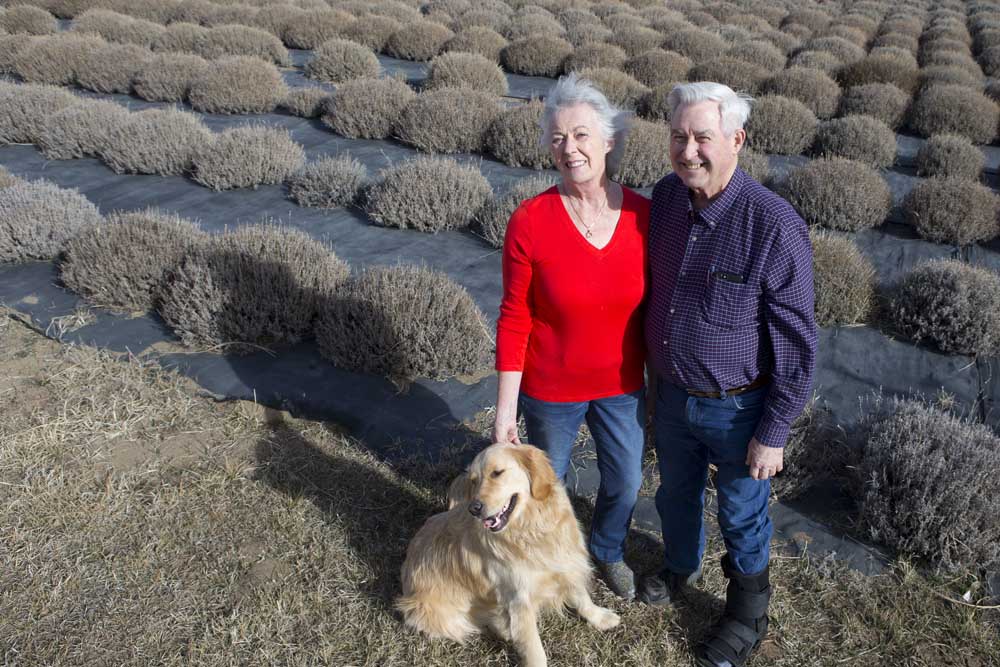Couple tend fields of lavender in Tumalo
Published 12:00 am Tuesday, February 20, 2018

- (Andy Tullis/Bulletin photo)
A fresh, earthy scent fills the air at Gordon and Judy Knight’s Tumalo Lavender farm, bringing with it a sense of calm even in the dead of winter.
The 10-acre farm is home to 10,000 lavender plants, a small shop, two homes, four greenhouses, a vineyard and an extractor where the oils and essences are derived. Not at all unusual for a working farm, but unusual for a retired couple in their 70s who do most of the work themselves, from harvesting, to extracting the oils, to making soap for sale.
“It’s very satisfying to know that people are buying our plants,” Judy Knight said. “Many of them are returning customers.”
It wasn’t always all about lavender for the Knights. Before they retired, Judy Knight, now 71, worked in the health care industry as an insurance specialist, and Gordon Knight, now 75, owned several travel businesses.
But farming is in this Central Oregon couple’s blood. They both owned farms while working.
The couple purchased the Tumalo farm in 2001 and didn’t know what they’d do with the land. But after several years of research on what would grow best in the Central Oregon climate, they settled on lavender. To be exact, 23 varieties of lavender, but English Lavender is the most popular, Judy Knight said.
“There’s a lot of call for lavender,” Gordon Knight said.
Judy Knight shows off the sprinkler system that Gordon Knight laid, the heated plant beds he made in the back of their home where thousands of seedling lavender plants get their start and the Mason jar lights he made for their company’s little store. Gordon Knight shows off the lavender-infused handmade soaps, baking mixes, sachets and honey, all made by Judy.
About half the business is selling lavender plants to other growers; the rest comes from selling products made of the lavender, Gordon Knight said. Last year the company shipped 60,000 plants to growers and individuals from South Carolina to Hawaii. The plants are in high demand these days, the Knights said, because so many people believe in the health properties of lavender.
The oil is used as a disinfectant, an antiseptic, an anti-inflammatory and for aromatherapy. An infusion of lavender is claimed to soothe and heal insect bites, sunburn and small cuts, burns and inflammatory conditions and even acne.
The Knights talked to The Bulletin about farming lavender. Their responses have been edited for length and content.
Q: Why did you decide to grow lavender over any other kind of crop?
A: Judy came home one day and had heard about a lavender festival in Sequim, Washington. We went up and saw what they were doing and we had been thinking about what to do with these 10 acres. After that we spent close to three years investigating lavender and what to do with it and its uses.
Q: What do you get out of this in retirement?
A: It’s very satisfying to know that people are buying our plants and return customers are buying our products. We’ve helped a lot — maybe up to 11 farms right here in Central Oregon — get started. We’ve been free with sharing what we’ve learned, the good and the bad. We’ve only been taken advantage of by one or two growers that wanted our three years worth of research. But when they buy plants from us we’re usually free to give advice. When we bought this farm, it was nothing. It took a lot of effort.
Q: What makes your farm special?
A: We have varieties that grow really well in our climate Zone 5. They’re good down to minus 20 degrees. The heat is OK. So all of them we have in the field and that we propagate are good for Zone 5. We ship plants all over the United States: Texas; the Midwest; Georgia; Wisconsin; Michigan, where they have really rough winters. We have large and beautiful farms that we sold our plants to over the years. One company in Wisconsin, the grower flies out to Bend and rents a U-Haul to haul thousands of our plants to their business.
— Reporter; 541-633-2117, sroig@bendbulletin.com








